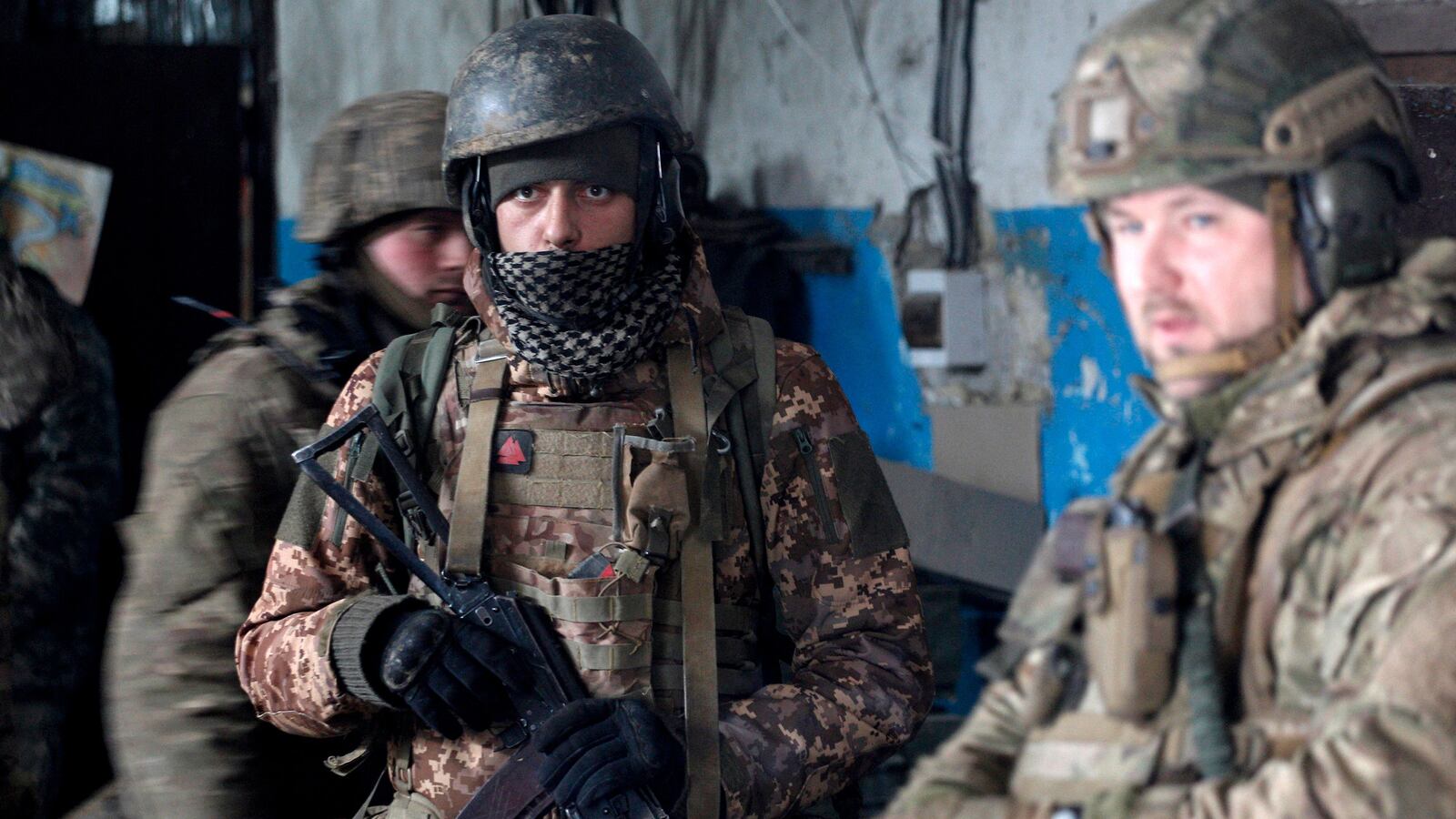However unnerving Russia’s invasion of Ukraine is, the fight is a long, long way from the titanic, globe-spanning conflict that would constitute a “world war.”
For Ukraine, this is an existential conflict for national survival. For the rest of the world, this conflict may seem terrifying, but that’s what all wars look like to anyone paying attention up close—especially one involving a nuclear-armed combatant. The world hasn’t seen a high-intensity conflict between two relatively modern militaries in Europe since World War II. Of course this is a shock to the system.
If the U.S. and NATO want to constrain Russia’s actions in Ukraine, there are many options short of full conflict.
For instance, during the Korean War, the Soviet Union sent both fighter aircraft and pilots to fly them against U.S. aircraft. This playbook could be repeated with NATO countries contributing equipment and troops. More recently, Russia deployed military “contractors” throughout the eight years of destabilization in Ukraine to provide Moscow with plausible deniability. The U.S. and NATO could likewise deploy contractors, even if they are used in limited non-combat roles such as supply and building fortifications. Plans for Pentagon cyberattacks have been on the books for a while. The point is, there are options for the U.S. and NATO to exert military pressure on Russia without escalating to an all-out war.
The problem now is that preemptively panicking over potential escalation effectively grants Vladimir Putin control over the size and scale of the conflict.
Crucially, just because a conflict could grow into a larger-scale, multi-nation fight doesn’t mean it necessarily will. The management of a conflict's size and scope are things that participants try to closely monitor and manage. Jumping to the conclusion that literally every move by NATO will lead to an apocalyptic war for the ages is grossly premature. It’s like forwarding matches from a dating app to a wedding planner. There are some important intermediate steps you can’t skip.
For example, on Saturday, March 5, The New York Times reported that Putin warned the widespread and devastating economic sanctions imposed on his country were “akin to a declaration of war.”
Are we to treat that as a threat of nuclear war as well? If the Western response to a Putin nuclear threat is always going to involve running away, that’s an invitation to Putin—and everyone else with the bomb—to tell us that the response to anything and everything will be nuclear.
Make no mistake, the direct intervention of NATO and U.S. forces in the fight by imposing a no-fly zone (NFZ) over Ukraine would be a very serious escalation. But just because a NFZ would expand the conflict doesn’t mean there aren’t greater and lesser degrees of commitment.
Even advance deliberations over a hypothetical NFZ will force Russia to make serious choices. Will they attempt to shoot down U.S. jets? Could they provoke an attack on unarmed Russian transport aircraft? Will they use ground-based defenses to take out U.S. aircraft? Will they use only air defense systems located in Ukraine?
For each of those decisions, the U.S. and its NATO allies need to think through their response. Would an NFZ mean targeting jets operating in Russian air space near Ukraine? What if those jets shoot at U.S. or NATO jets over Ukraine? Rules of engagement are already notoriously tricky and require very careful consideration. A NATO-enforced NFZ over Ukraine would be far trickier than any NFZ in human history. Collapsing the entire discussion to a premature hysteria about nuclear apocalypse does nobody any favors.
This posturing is all part of the broader negotiation over who will impose (then enforce) which rules on the battlefield, and under what conditions. Indeed, warfare is already a kind of kinetic, violent negotiation of sorts— politics by other means. Still, nobody should make the mistake of assuming that once the shooting starts, the politicking and negotiating disappear.
It might well be that a NFZ wouldn’t be effective enough to merit the risk. But the arguments that apply to a NFZ can be extended more broadly to any kind of intervention in the conflict.
The West has already decided to join the fighting by donating thousands of anti-tank and anti-aircraft missiles to Ukrainian forces. The U.S. and NATO have to make decisions about what further involvement means—for example, providing tanks and other fighting vehicles, additional electronic warfare support, or sophisticated anti-aircraft missiles.
If the debate regarding U.S. and NATO intervention can remain calm, it creates the possibility of controlling future involvement, rather than letting it be dictated by events beyond their control. Like it or not, there are potential (if unlikely) courses of action Russia could take in Ukraine that would make it politically impossible for the U.S. and NATO to avoid deeper involvement.
Paradoxically, aggressive efforts to restrict the conflict effectively limit U.S. and NATO strategic influence. This, in turn, gives Putin disproportionate control over the scale and scope of the conflict, allowing him to continue the fight on his preferred terms.
The West blundered into World War II by trying to avoid direct conflict with Germany and, in so doing, precipitated the bloodiest conflict in human history. In coming days and weeks, it will be vitally important that cooler heads can honestly discuss the consequences of all available options without being drowned out by the shrillest hawks or the most panicked doves.








